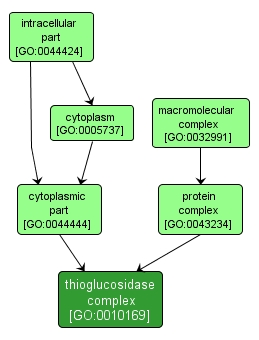GO TERM SUMMARY
|
| Name: |
thioglucosidase complex |
| Acc: |
GO:0010169 |
| Aspect: |
Cellular Component |
| Desc: |
A large (200-800 kDa) multiprotein complex formed by 70-kDa and 5-kDa myrosinases, myrosinase- binding proteins (MBPs), MBP-related proteins and myrosinase-associated proteins. The complex has been identified in Brassica napus seeds. |
| Synonyms:
|
|

|
INTERACTIVE GO GRAPH
|














